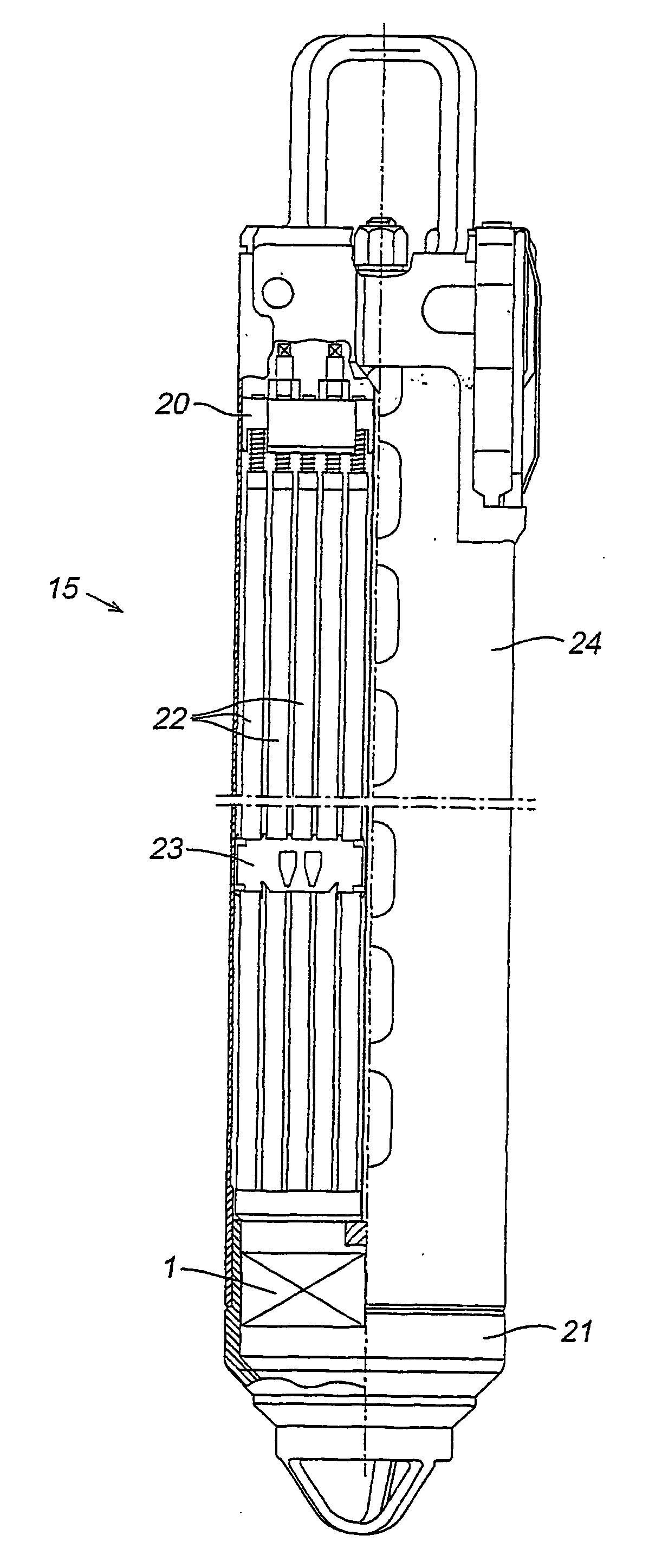Filter and fuel assembly for a light-water nuclear reactor
a technology of light-water nuclear reactor and fuel assembly, which is applied in the direction of reactor fuel elements, thermal reactors, separation processes, etc., can solve the problems of defect fuel having to be changed, reactor operation shut down, and nuclear fuel, i.e. uranium, to achieve the effect of good balance between flow resistance and catching ability, increasing pressure drop, and limited flow resistan
- Summary
- Abstract
- Description
- Claims
- Application Information
AI Technical Summary
Benefits of technology
Problems solved by technology
Method used
Image
Examples
Embodiment Construction
[0029] The FIGS. 1 and 2 show a filter 1 for separating particles from the cooling water in a nuclear plant. The filter 1 has an inlet end 2 and an outlet end 3. The cooling water may thus flow through the filter 1 from the inlet end 2 to the outlet end 3 in a main flow direction z.
[0030] The filter 1 comprises an essentially rectangular solid plate 4, in which a number of elongated spaces 5 are arranged. The plate 4 is made of a metallic material, for example stainless steel. The spaces 5 are parallelly arranged and extend along the main part of the length of the plate 4 in a direction y transversely to the flow direction. The spaces 5 extend through the entire plate 4 in the flow direction z and have openings in the inlet end 2 and the outlet end 3 so that the cooling water can flow through the filter 1. The spaces 5 define channels, through which the cooling water has to pass before reaching the fuel rods.
[0031] As shown in FIG. 2 the spaces 5 comprise a first section 6, an inter...
PUM
| Property | Measurement | Unit |
|---|---|---|
| Flow rate | aaaaa | aaaaa |
| Length | aaaaa | aaaaa |
| Area | aaaaa | aaaaa |
Abstract
Description
Claims
Application Information
 Login to View More
Login to View More - R&D
- Intellectual Property
- Life Sciences
- Materials
- Tech Scout
- Unparalleled Data Quality
- Higher Quality Content
- 60% Fewer Hallucinations
Browse by: Latest US Patents, China's latest patents, Technical Efficacy Thesaurus, Application Domain, Technology Topic, Popular Technical Reports.
© 2025 PatSnap. All rights reserved.Legal|Privacy policy|Modern Slavery Act Transparency Statement|Sitemap|About US| Contact US: help@patsnap.com



